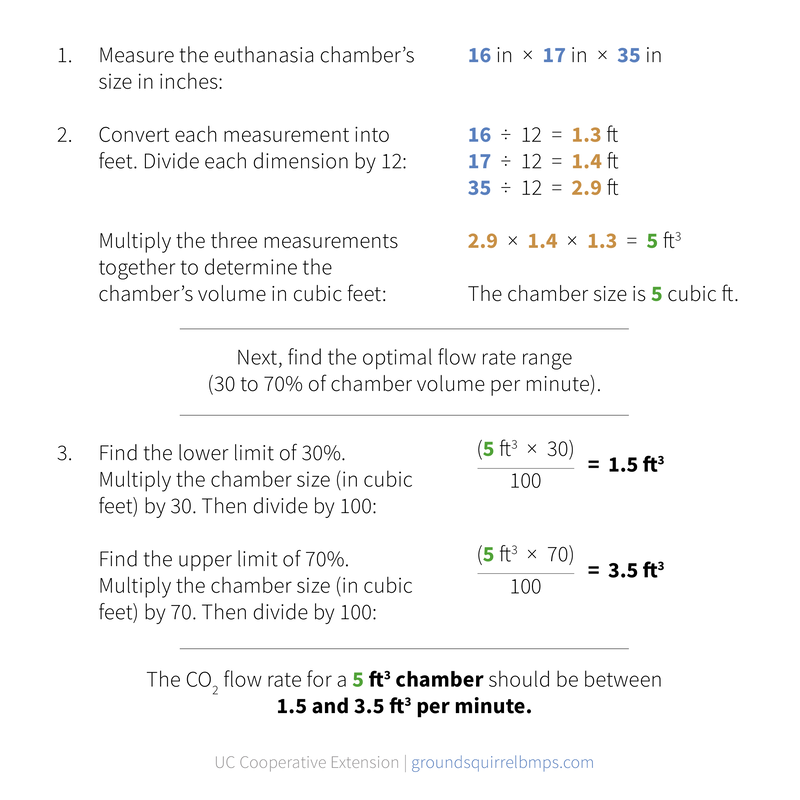Euthanasia
|
According to California Fish and Game Code, once a live animal is trapped, it must either be released where it was trapped or it must be euthanized. Animals can be euthanized by a shot to the head if it is legal to discharge a firearm in the trapped area. Drowning is not an acceptable method of euthanasia and it is illegal under California State law. Alternatively, ground squirrels can be euthanized by carbon dioxide; remember, it is illegal to use carbon monoxide for euthanasia of captured animals. Ground squirrels can be easily dispatched in euthanasia chambers. These can be commercially acquired from specialized vendors or assembled using few materials.
Assembling a chamber It is not recommended to handle live ground squirrels. It is therefore a good idea to make sure that live traps can fit directly into the euthanasia chamber. This minimizes direct contact with the trapped squirrel and reduces injury to squirrel. In any case, a chamber at least twice the size of an adult ground squirrel is required. A portable insulated cooler with a drain hole is a suitable euthanasia chamber, for the chamber should not be airtight. Attach rubber tubing to the drain hole and then to a CO2 tank with a flow regulator attached. A window that allows you to see inside the chamber can be very helpful. You can install a window in a cooler by using a jigsaw to drill an opening, cutting a custom piece of Plexiglas to fit, then attaching it to the cooler using epoxy. Calculating CO2 Flow Humane euthanasia requires optimal CO2 flow, which depends on the size of your euthanasia chamber. Finding the optimal flow for your chamber (approximately 30 to 70% of the chamber’s volume per minute) takes just a few simple calculations, as demonstrated in the example below. Complete the calculations for CO2 flow with the same units used by the flow regulator (cubic feet/hour or liters/minute). |
See also: |
|
Download calculations for CO2 flow as a PDF |
|
Once you have calculated the flow rate, place the trap with the squirrel into the euthanasia chamber and turn on the CO2 at the flow rate you have just calculated.
Make sure that the animal has stopped moving and wait for a few minutes before turning off the gas. If exposed to air before it is dead, the ground squirrel could revive. Confirm that the animal is dead by touching a stick to the ground squirrel’s eyeball; if the animal is dead, it will not blink. If the animal is not dead, or if you unsure, return it to the chamber and repeat the process. |


